It should have been plain sailing for Ford with the European designed Focus, but it wasn't to be.
The introduction of a dual-clutch automatic transmission saw the Focus badge develop a reputation for appalling reliability.
Dual-clutch automatics were hailed as a revolution in transmission technology, promising the convenience of an automatic and the efficiency of a manual.
Practice unfortunately didn't match the theory and owners of LW Focuses found themselves with troublesome cars that saw them regularly heading to their dealers.
By the time of the LZ launch in 2015 Ford had dropped the dual-clutch transmission in favour of a regular automatic transmission and the problem was fixed.
Models
The all-new LW Focus launched in 2011 followed the same path as those that had preceded it.
There was a choice of a four-door sedan and five-door hatch body styles, and four trim levels ranging from the Ambiente through the Trend and Sport to the Titanium.
The Ambiente was the entry model. It could be had as a sedan or hatch, with a 1.6-litre engine, and either a manual gearbox or automatic transmission in the case of the hatch, or just an automatic transmission if you chose the sedan.
Its list of standard features was quite comprehensive for an entry model; it included air conditioning, remote central locking, voice recognition, adjustable steering wheel, power mirrors with blindspot indicators, power windows, trip computer, a radio/CD player with six speakers, and Blutetooth allowing connection of an iPhone or Android device.
The list of safety features was also quite comprehensive, including front airbags for the driver and front passenger, side front airbags, head airbags, ABS anti-lock braking, emergency brake assistance, electronic brakeforce distribution, traction control, and electronic stability control.
Next up in the range was the Trend, also available in sedan and hatch variants, but with the extra performance of a 2.0-litre engine or an economical 2.0-litre turbo-diesel, and like the Ambiente you had the choice of a manual gearbox or an automatic transmission in the hatch, but the sedan was only available with an automatic.
Over and above the standard features of the Ambiente the Trend came with 16-inch alloy wheels, cruise control, fog lamps, and rear parking sensors.
Similarly the Sport was available as a sedan or hatch, it too had the choice of 2.0-litre petrol four-cylinder engine or a 2.0-litre turbo-diesel, and it also offered the choices of manual gearbox and automatic transmission on the hatch and automatic transmission only on the sedan.
The Sport's list of standard features was extensive, with dual-zone climate control air conditioning, 17-inch alloy wheels, automatic headlights, leather steering wheel, automatic windscreen wipers, sports seats, sports-tuned suspension, and sat nav.

As the top-of-the-range model the Titanium had pretty much everything you could want.
Like the other models it was available as a sedan or hatch, there was the choice of 2.0-litre four-cylinder petrol or turbo-diesel engines, but the only transmission was an automatic.
Befitting its lofty place in the range it had the most standard features of all, with the addition of 18-inch alloy wheels, heated front seats, keyless entry, leather trim, and front and rear parking sensors.
A Mark II update was released in 2012, with production of Australian-delivered cars switching from Germany to Thailand.
The LW gave way to the LZ in 2015. Gone was the Ambiente, replaced as the entry model by the Trend, and new to the range was the ST.
With new looks the LZ came with fresh features and new 'EcoBoost' engines promising more performance and lower fuel consumption.
The Trend was now the entry model and it was available as a sedan or hatch, it had a 1.5-litre turbocharged engine and the choice of manual gearbox or automatic transmission.
New to the range was the ST, which came fully equipped with features like sports suspension, sports seats, a sporty body kit, 18-inch alloy wheels, sat nav, tyre pressure sensor, multi-function touch screen, extra gauges, a reversing camera, and cupholders in the front.
The ST was only available in hatch form, with a 2.0-litre turbocharged four-cylinder engine, and a six-speed manual gearbox.
For performance there was no beating the RS hatch, also new to the LZ range. The RS was an all-wheel drive hatch with a sizzling hot 2.3-litre turbocharged four-cylinder engine, and a six-speed manual gearbox.
There was no sunroof offered.
The spare tyre was a space saver.
Cabin
Inside, the front seat occupants were comfortably accommodated in supportive seats, while there was sufficient room in the rear for a couple of adults.
The rear seat in the hatch was a 60/40 split-fold arrangement that made it more versatile than the sedan.
.jpg)
Engine
The base model Ambiente came with a 1.6-litre four-cylinder, the others offered a choice of 2.0-litre petrol four or a 2.0-litre turbo-diesel.
With 92kW of peak power and maximum torque of 159Nm the 1.6-litre engine in the Ambiente delivered modest performance without ever being thrilling.
At its best the Ambiente would account for the 0-100km/h sprint in 10.2sec.
The 2.0-litre four-cylinder petrol engine that powered the bulk of the range was capable of putting out 125kW at its power peak and top torque of 202Nm.
There was also the choice of a 2.0-litre turbo-diesel engine if you were concerned about fuel consumption.
At its best the diesel produced 120kW (160 horsepower), and a whopping 340Nm when at its peak torque.
Both of the petrol and diesel engines offered relaxed effortless motoring around town or out on the highway.
.jpg)
At its best the 2.0-litre petrol engine would complete the 0-100km/h acceleration test in 9.9sec.
Sedans were only available with a six-speed dual-clutch automatic transmission, while hatch buyers had the option of a five-speed manual if they chose the petrol engine.
Those who chose the turbo-diesel engine got a six-speed dual-clutch automatic.
The dual-clutch transmission, dubbed 'Powershift' by Ford, was not a conventional automatic; it was a blend of manual gearbox efficiency and the convenience of automatic shifting.
New engines, and a regular automatic transmission were the big news with the LZ Focus in 2015.
All models boasted Ford's EcoBoost turbocharged engines, for better performance and drivability and lower fuel consumption.
Most models had a 1.5-litre turbocharged four cylinder engine producing 132kW/240Nm, while the sporty ST had a 184kW 2.0-litre turbocharged four, and the sizzling hot RS boasted a 257kW 2.3-litre four-cylinder turbo.
But the really good news was that Ford dumped the troublesome Powershift dual-clutch automatic transmission in favour of a regular six-speed auto.
Driving
European Fords have always been noted for their brilliant chassis dynamics and the Focus was no different. The handling was agile and the steering responsive and precise, and the good thing is that the ride was still comfortable.
While the performance of the 1.6-litre models was modest, the 2.0-litre had plenty of performance and is the best all-round choice.
But if economy is crucial the turbo-diesel is the better choice, and the good thing is that it still has good performance.
Safety
With front, side and head airbags, and a full complement of dynamic safety systems including ABS braking and stability control it should be no surprise that ANCAP gave it the maximum rating of five stars.
Lap/sash seat belts in all five seats allowed the fitment of a baby car seat.
ISOFIX anchor points were fitted.
Any common issues?
Problems with the dual-clutch Powershift automatic transmission overshadowed an otherwise good and reliable car, and damaged the image of the Focus.
Many owners experienced problems with the Powershift transmission, some many times, and Ford often treated them poorly.
The problem related to the clutch packs, and the transmission computer.
Shuddering when taking off from a standing start is a giveaway, but it may not do it every time.
Not every car suffers from the problem, but it's so widespread as to rule out the LW Focus as a used buy.
Apart from the problems with the Powershift transmission, the reliability of the Focus is commendable, but such are the woes with the transmission that it's best not to take the risk.
If you choose to take the risk, make sure the car has been serviced regularly, and have it thoroughly tested by a mechanic experienced with the Powershift transmission.
It would be better to buy the later LZ with its regular automatic and none of the problems of the LW.
Capped price servicing applies to the LW Focus, so service costs are known and not expensive. It covers cars for up to seven years and 135,000km.
MORE: If anything crops up, you'll probably find it on our Ford Focus problems page
Owners view
Jack Absalom – I'll never buy another Ford. My LW Mk II Sport was constantly broken down and off the road, and Ford couldn't or wouldn't fix it.
Dee Evans – I am one of those affected by the dodgy transmission. I bought my LW Mk II Titanium new in 2013, but it has been nothing but trouble.
Bob Johnson – Our 2013 Sport diesel pulls great, is very economical, and comfortable. We had issues with the automatic transmission, but they were fixed by a service at 60,000km and it's been fine since.
Tanya Goldsmith – My 2016 Trend is a spritely performer, its controls are well weighted and the steering feel is great, and there's very little road noise on the highway.
Rivals
Hyundai i30 – 2011-2018
Value-for-money, great warranty, low running and repair costs, and it's also a beaut little car.
3.5 stars.
VW Golf – 2011-2018
Great driving dynamics, lively performance and all-round ease of use, but issues with reliability dampen the enthusiasm.
3.5 stars.
Holden Cruze – 2011-2018
A dull driver, but is large compared to rivals, and ticks the safety boxes.
3 stars.
Verdict
Buy an LZ and avoid the LV auto blues.
Rating
LW – 2 stars
LZ – 4.0 stars
Ford Focus 2011: Ambiente
| Engine Type | Inline 4, 1.6L |
|---|---|
| Fuel Type | Unleaded Petrol |
| Fuel Efficiency | 6.6L/100km (combined) |
| Seating | 5 |
| Price From | $5,830 - $8,250 |
| Safety Rating |
|
Pricing Guides





.jpg)
.jpg)
.jpg)
.jpg)
.jpg)
.jpg)
.jpg)
.jpg)
.jpg)
.jpg)
.jpg)

.jpg)
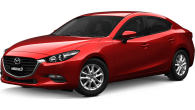



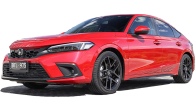







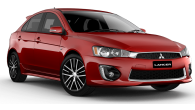




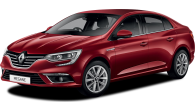

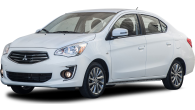






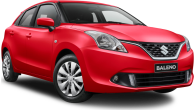





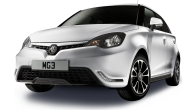


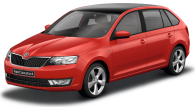



.jpg)


.jpg)

.jpg)
Comments